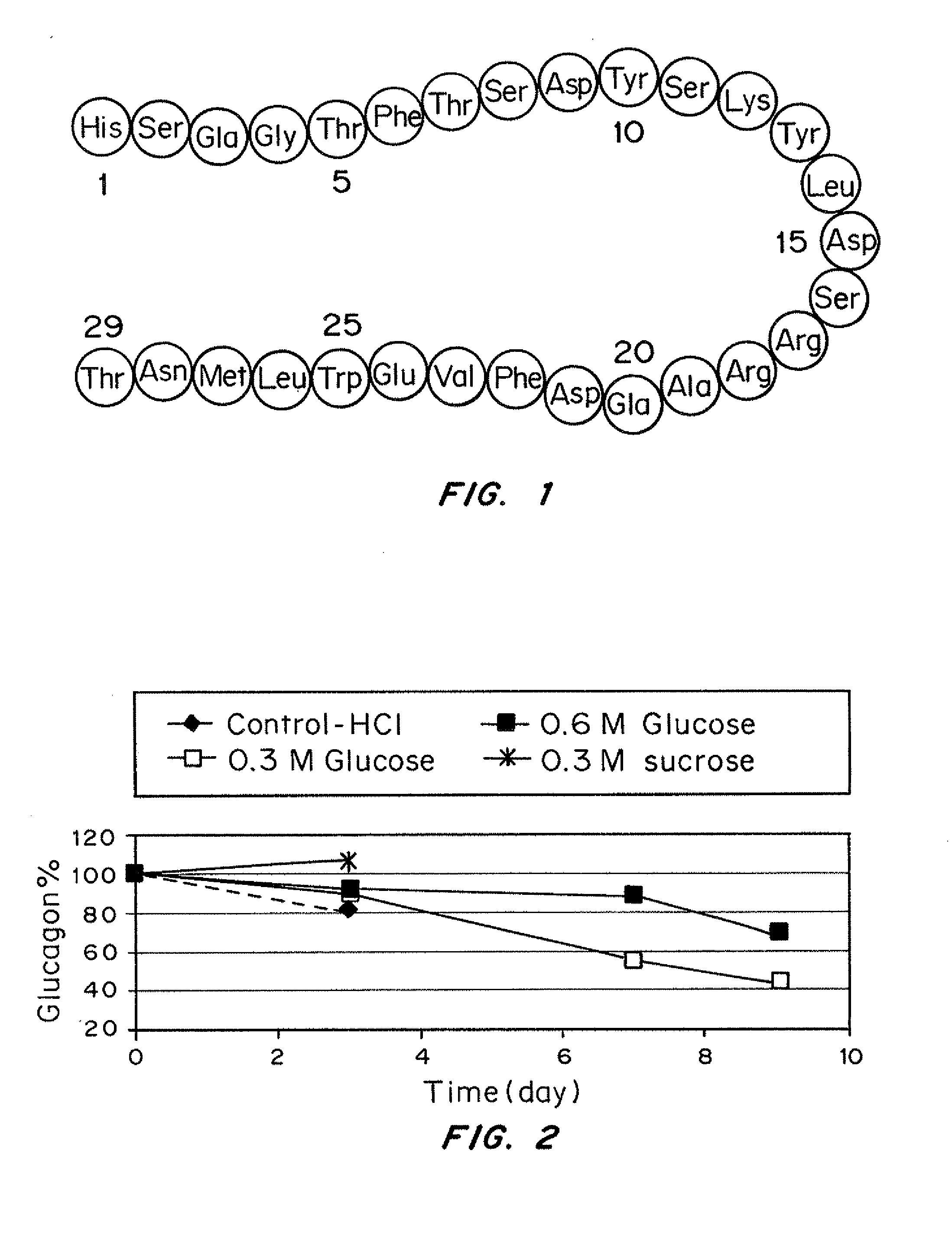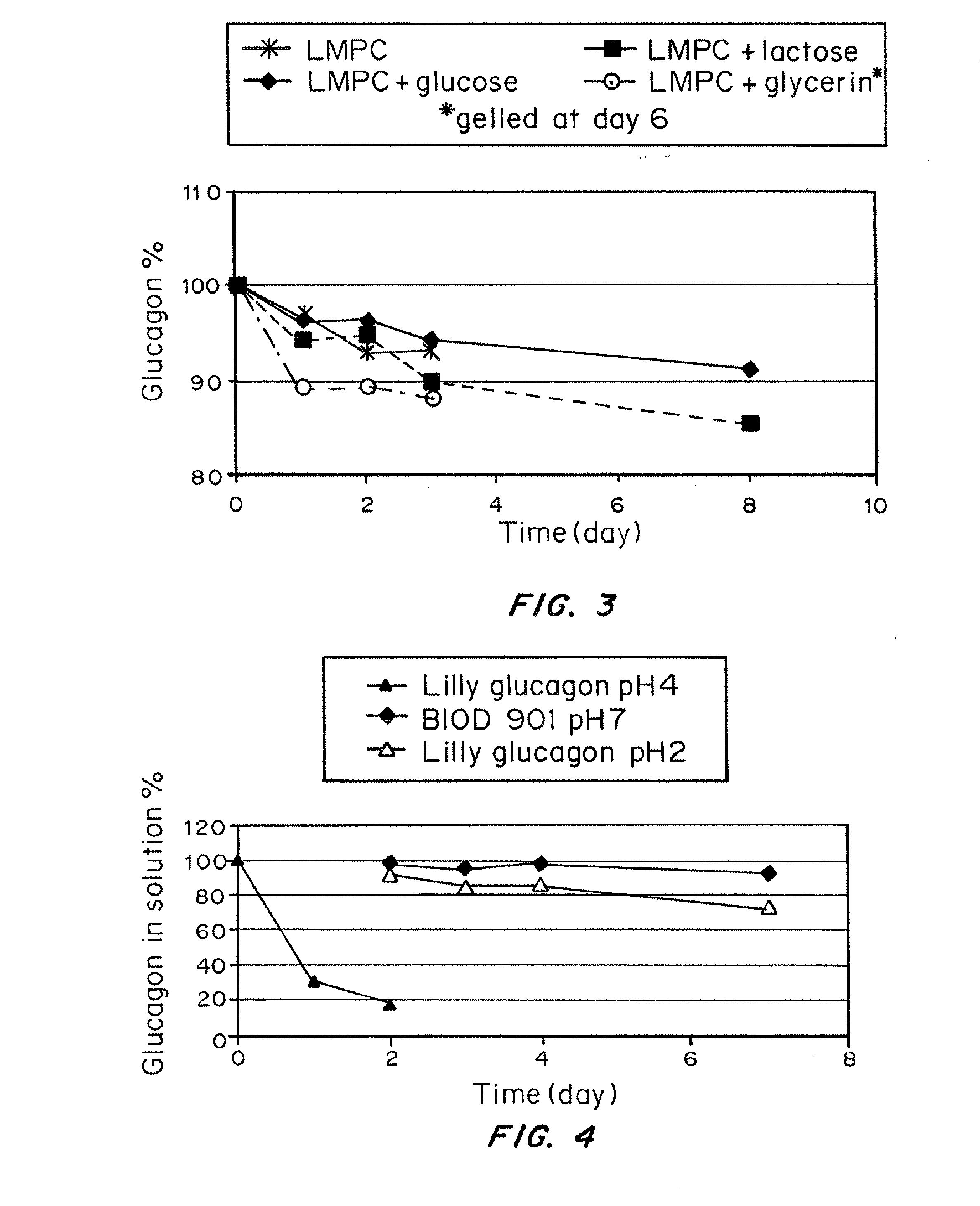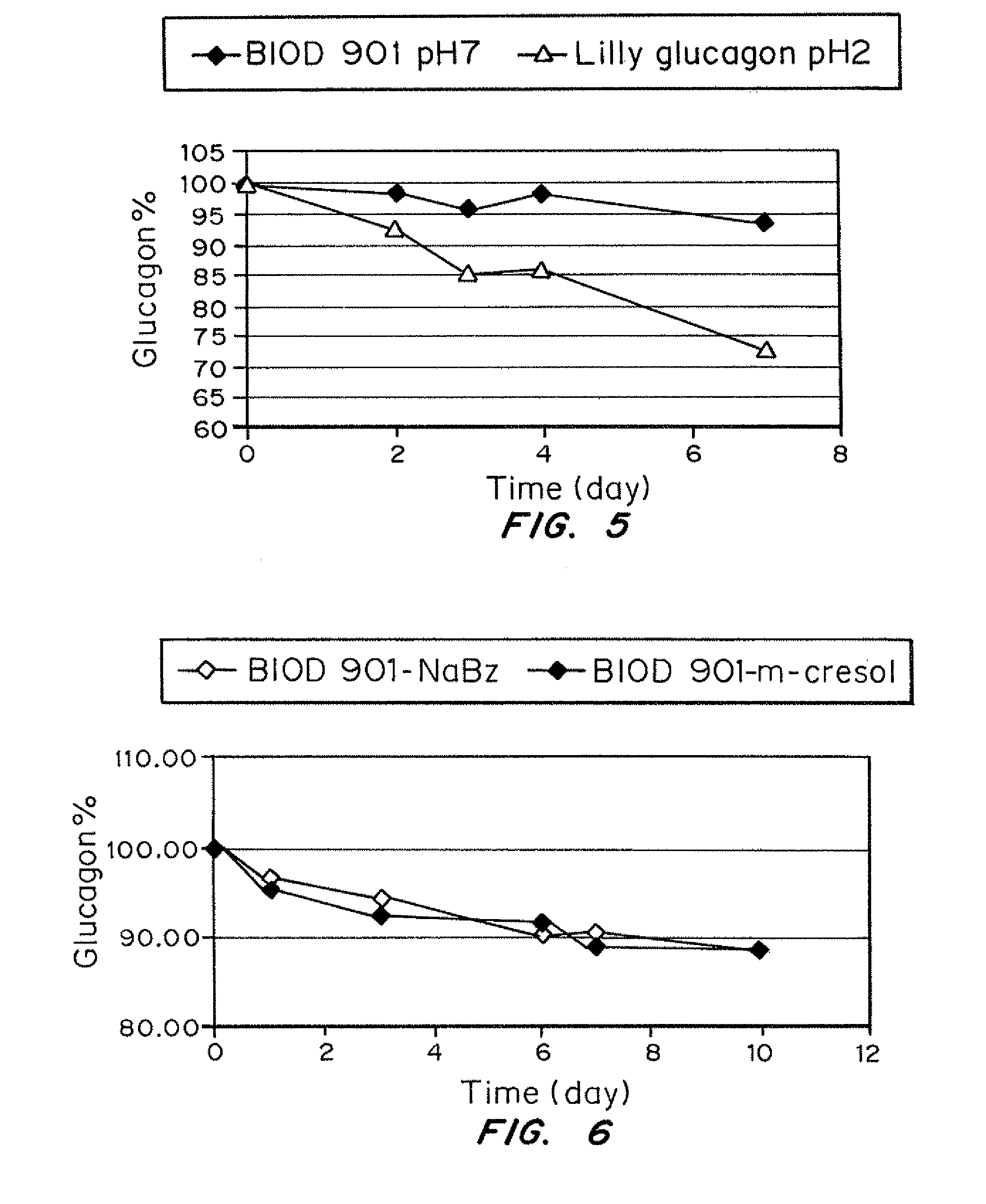Stabilized glucagon solutions
a technology of glucagon and solution, applied in the direction of peptide/protein ingredients, extracellular fluid disorder, metabolic disorder, etc., can solve the problems of loss of biological activity, inability to prevent hypoglycemia, formulations are not capable of fulfilling that need,
- Summary
- Abstract
- Description
- Claims
- Application Information
AI Technical Summary
Benefits of technology
Problems solved by technology
Method used
Image
Examples
example 1
Simple Sugars for Glucagon Stabilization
[0048]This initial study was designed to compare glucagon stabilization with sucrose and glucose at different concentrations at pH 4.7, 25° C. Glucagon solutions were prepared to a concentration of approximately 1 mg / mL and mixed with either (1) HCl (control), (2) 0.6M glucose, (3) 0.3M glucose, or (4) 0.3M sucrose.
[0049]Although the sucrose-stabilized glucagon was stable at day 3, it gelled at day 4. The control in HCl also rapidly degraded and gelled at day 4. 0.6 M glucose was effective to maintain the glucagon at 90% of original 1 mg / mL dose for 7 days (FIG. 2). A similar result was seen at pH 3.6 and over the temperature range of 25-37° C.
[0050]Glucose alone is somewhat effective at stabilizing glucagon. However, the higher concentration 0.6M (hypertonic) is better than 0.3M (physiologic). The hypertonic solution is likely to create injection site reactions. It is desirable to formulate at a higher pH, but the addition of sugar alone is l...
example 2
Studies Showing the Effect of Different Sugars on the Stability of Glucagon in Combination with LMPC
[0051]To further optimize the glucagon formulation, LMPC was added to increase the solubility of glucagon at neutral pH. The glucagon LMPC was formulated with several sugars to determine whether the formulation stability could be extended beyond the original glucagon / glucose formulation (FIG. 2). The sugars selected were lactose (90 mg / mL), glucose (45 mg / mL) and glycerin (23 mg / mL). The test sugar+LMPC formulations were compared to LMPC (2 mg / mL) alone following incubation at 37° C. The results are shown in FIG. 3.
[0052]The results of this study found that glucagon with LMPC+glycerin and glucagon+LMPC alone gelled by day 6. Lactose and glucose remained in solution to day 8, however, though these were not observed to gel, the glucose more effectively chemically stabilized glucagon than did lactose. Therefore, glucose in conjunction with LMPC is the preferred combination for glucagon s...
example 3
Development of a Stable Glucagon Formulation for Use in Bihormonal Pumps
[0053]The purpose of this example was to make a stable glucagon suitable for use with a bihormonal pump (artificial pancreas). For this purpose, an antibacterial agent or preservative is added to complete the formulation. Adequate physical stability at 37° C. is also required, since the pump is close to the body, exposing it to physiological temperatures. The tubing of the pump must also be free of any particulate matter, gels or fibrils for at least 5 days at 37° C. for the pump to accurately deliver glucagon to the injection site.
[0054]Since the patient is continuously subject to the infusion, the pH of the formulation should be in the pH range of 4-8 to avoid site discomfort. Commercially available formulations of glucagon are only intended for a single rescue dose of 1 mg and therefore are prepared at a very low pH of approximately 2. These formulations come in a kit containing a lyophilized glucagon powder ...
PUM
| Property | Measurement | Unit |
|---|---|---|
| concentration | aaaaa | aaaaa |
| concentration | aaaaa | aaaaa |
| concentration | aaaaa | aaaaa |
Abstract
Description
Claims
Application Information
 Login to View More
Login to View More - R&D
- Intellectual Property
- Life Sciences
- Materials
- Tech Scout
- Unparalleled Data Quality
- Higher Quality Content
- 60% Fewer Hallucinations
Browse by: Latest US Patents, China's latest patents, Technical Efficacy Thesaurus, Application Domain, Technology Topic, Popular Technical Reports.
© 2025 PatSnap. All rights reserved.Legal|Privacy policy|Modern Slavery Act Transparency Statement|Sitemap|About US| Contact US: help@patsnap.com



